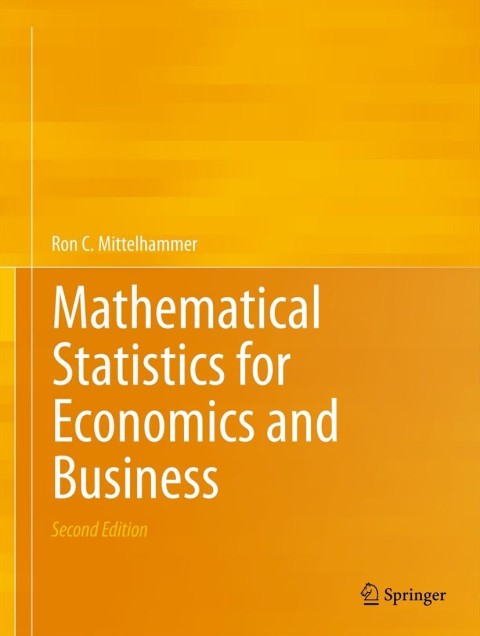Suppose (mathbf{Y}_{(n times 1)}=mathbf{x}_{(n times k)} boldsymbol{beta}_{(k times 1)}+boldsymbol{varepsilon}_{(n times 1)}), where (boldsymbol{varepsilon} sim) (Nleft(mathbf{0}, sigma^{2} mathbf{I}ight))
Question:
Suppose \(\mathbf{Y}_{(n \times 1)}=\mathbf{x}_{(n \times k)} \boldsymbol{\beta}_{(k \times 1)}+\boldsymbol{\varepsilon}_{(n \times 1)}\), where \(\boldsymbol{\varepsilon} \sim\) \(N\left(\mathbf{0}, \sigma^{2} \mathbf{I}ight)\) and \(\mathbf{x}\) has full column rank.
(a) Show that
\(T=\frac{\boldsymbol{\ell}^{\prime}(\hat{\boldsymbol{\beta}}-\boldsymbol{\beta})}{\left(S^{2} \boldsymbol{\ell}^{\prime}\left(\mathbf{x}^{\prime} \mathbf{x}ight)^{-1} \boldsymbol{\ell}ight)^{1 / 2}}\), for any conformable \(\boldsymbol{\ell} eq \mathbf{0}\), has a \(t\)-distribution with \((n-k)\) degrees of freedom. (Hint: Transform \(T\) so that it is expressed as a ratio of two independent random variables, with an \(N(0,1)\) random variable in the numerator, and the square root of a \(\chi^{2}\) random variable divided by its degrees of freedom in the denominator.)
(b) Using the fact that \(T\) has a \(t\)-distribution with \((n-k)\) degrees of freedom, define a random interval \(\left(Z_{1}, Z_{2}ight)\) which satisfies \(P\left(\boldsymbol{\ell}^{\prime} \boldsymbol{\beta} \in\left(z_{1}, z_{2}ight)ight)=.95\) when \(n-k\) \(=25\). (Hint: Define your \(z_{1}\) and \(z_{2}\) variables as appropriate functions of \(\left(\hat{\boldsymbol{\beta}}, S^{2}ight)\), which will be suggested by a transformation of \(\left.P\left(t \in\left(t_{\ell}, t_{h}ight)ight)=.95ight)\), for outcomes \(t\) of \(T\).
Step by Step Answer:

Mathematical Statistics For Economics And Business
ISBN: 9781461450221
2nd Edition
Authors: Ron C.Mittelhammer





